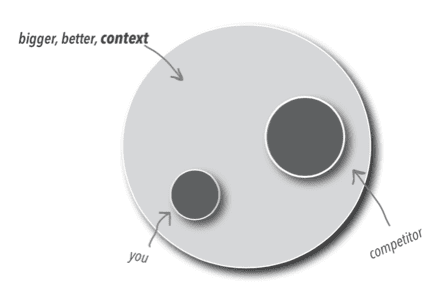A great business doesn’t just champion its own values — it champions its customers’ values.
For B2Bs in particular, this means solving problems for our customers that make their customers’ experience a better one. Thinking a couple steps ahead and focusing on those solutions is what will set you apart from your competitors.
This doesn’t come naturally
A study by the Temkin Group concluded that “organizations have a natural tendency to operate from an internal perspective, focusing on the needs of their functional silos more than on their clients.” Companies need to be deliberate about countering that tendency by instilling a customer-oriented mindset across the entire organization, and building a customer-centric model of relationship management.

Of course, it’s easy to say you want to instill a customer-centric mindset — what entrepreneur would deny the importance of that?
Things get complicated when you put those words into action. It can feel awfully unnatural to forgo building a better mousetrap to instead focus on helping people solve their mouse problem.
As Kathy Sierra writes in Badass: Making Users Awesome, your customers don’t care about your product or service all that much. They care about what it helps them do. But most companies aren’t focused on that part:
Most companies compete on the quality of the product, not the quality of the user’s results with the product.
Users care about being awesome at the context your product or service lives in, not the product or service itself. People generally want to be good at photography, for example, not at cameras. You can champion your customer’s values by helping make them successful at the broader context in which your product or service exists.

From “Badass: Making Users Awesome” by Kathy Sierra
Help Scout’s customers don’t want to be great at using our help desk tool — they want to be great at customer support.
Here are a few ways we try to focus on that and champion our customers’ values.
Educational content
With our blog and resources, we aim to create educational content that helps customer support professionals excel at their work.
We’ve published on everything from building a customer support career, to salary studies showing how compensation compares across the industry, to a monthly series analyzing customer support trends — essentially, we don’t publish anything that doesn’t offer real value to our readers, by elevating their work and the profession at large.
Community building
We sponsor SupConf, a wonderful customer support-related conference put on by the good folks in the Support Driven community. (As we grow, and hopefully turn more profit, we’ll be looking for more ways to support what our customers value.)
We encourage customer support professionals to guest post on our blog, submit stories for #HumansOfSupport on Facebook, and contribute to Help Desk Tips, a weekly series about best practices in support.
A number of us at Help Scout hang out in Support Driven’s lively Slack, contributing to conversations and answering questions when we can.
From time to time and because we’re a remote company, we host customer events in different cities to say thanks and learn more about what our customers are trying to do and the challenges they face.
Product philosophy
Our founders built Help Scout because they wanted a help desk that made the experience simpler and more human for the people actually receiving help.
The support emails sent from our platform look like a normal email to our customers’ customers — there’s no ticket number to remember or customer portal to log in to.
And our embed tool, Beacon, lets our customers’ customers find answers or contact the support team without leaving the website.
Our customers don’t want their customers to feel like a ticket number, or make them jump through hoops to get help — that’s the problem we’re trying to solve for.
Instilling a customer-first culture
We try not to only pay lip service to being “customer first” — we bake it into our culture. Every new Help Scout employee gets trained on customer support. We hold “Support Power Hours” where everyone hops in the support queue together and everyone works through conversations.
Hearing from customers allows us to see pain points, use cases, and inspiration we wouldn’t otherwise encounter, laying the foundation for a better product and better cross-team communication.
On the growth team, we each carve out a four-hour block every week to dive into the customer experience and find a way to make things better — whether it’s sitting in on customer calls, sending handwritten thank-you notes, or meeting customers face to face, the goals are to interface directly with customers, show them some love, let them know we’re here, capture their stories and feedback and learn where we can be helpful.

We’re always trying to think ahead by a couple steps, and create products that make the customer experience better for the people who are buying from our customers.
Certainly, building a customer-oriented mindset can be more of a challenge in B2Bs, because buying behaviors and the customer journey are often more complicated than they are for B2Cs.
But whichever type of company you run, your customers have come to you for a solution, and your job is to help them solve that problem.
So what context does your product or service exist in, and how can you elevate your customers within that context?


